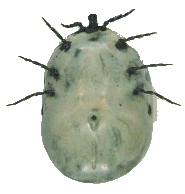 |
ENTOMOLOGY 2040
SECTION VI
INSECT BEHAVIOR |
LEARNING OBJECTIVES OF SECTION
After completing this section students should be able to:
- Explain what is meant by the term "programmed behavior".
- Explain the differences between innate and learned behavior.
- Describe the role of inhibition centers in insect behavior.
- Explain the differences between 'kineses' and 'taxes' as terms related to insect behavior.
- Describe the basic types of learning that have been demonstrated in insects.
- Describe the basic mental capacities of insects.
- Describe the basic mating strategies used by male insects in attracting females.
Describe the different levels of parental investment made by insects to insure survival of their young.
Describe the various strategies used by male insects to insure that their own sperm fertilized the eggs of the female, rather than those of a rival.
Terms: Innate, inhibition, circadian rhythm, response threshold, orientation, kinesis, taxes, habituation, associative learning, preimaginal conditioning, latent learning, sensory filter, sperm precedence.
- Insect Behavior.
1. Innate Behavior.
2. Orientation.
a. Kineses.
b. Taxes.
3. Learning and Memory.
a. Habituation.
b. Associative Learning.
c. Preimaginal Conditioning.
d. Transfer Learning.
e. Insect Memory.
f. Mental Compacities.
4. Parental Behavior.
a. Male Investment.
b. Female Investment.
5. Social Behavior.
a. Communication.
b. Division of Labor.
c. Termites.
d. Army Ants.
e. Leafcutter Ants.
STUDY QUESTIONS
- What do you think would be the advantages of instinctive behavior in insects? Why do you think learning is not more important in insect behavior?
- How do you think learning is related to the size of an organism?
- What are the advantages of circadian rhythms. How do you think such rhythms might have evolved?
- List the various types of learning that occur in insects and give one example of each type.
- Describe the various ways that female insects care for their brood. Describe one example of male maternal (or paternal) care.
- What is a basic difference between termites and all of the other social insects?
- What is the limiting factor on the size of an army ant colony?
- Describe one "entomological error" in the film "The Naked Jungle".
- What do you think an ant colony might be described as a macro-organism?
- Why do you think insecticides are not effective in controlling leaf cutter ants?
Go to Section VII Pollination - Honey Bees and Others
<< back

